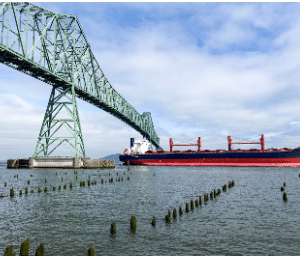Introduction
The Hooghly River brings so many people together by keeping them at a safe distance and providing them with an incentive to interact through a simple give-and-take approach. It provides a means for many families to keep employed by providing several job opportunities due to its industrial significance. The river is currently endangered due to pollution caused by our daily activities.
History
- After the fall of Satgaon, Lower Bengal’s trading hub, the Portuguese constructed Hooghly (now Hugli) in 1537. In 1632, the Portuguese were driven out of Hooghly by Mughal forces. Hooghly was the first English settlement in Lower Bengal (1651), but it was abandoned in 1690 in favour of Calcutta (now Kolkata).
- The Dutch founded a factory (trading station) at Chinsurah in the 17th century. In return for holdings in Sumatra, the British received Chinsurah and other Dutch colonies in 1825. (Indonesia). A Muslim imm-baah (gathering place), a Portuguese church (1660), and the Sandeshwar temple are among the important historical structures.
- In 1865, Hooghly and Chinsurah formed a single municipality. They have colleges that are connected with the Universities of Calcutta and Burdwan. The Rupnarayan and Damodar rivers drain the surrounding area, which is a lush, low-lying alluvial plain studded with marshes and abandoned river channels. The principal crops are rice, jute, sugarcane, and potatoes, with bananas and mangoes also being grown. The riverfront along Hugli’s river is densely populated and intensively industrialised, with jute, rice, and cotton mills, as well as rubber and chemical plants. Shrirampur and Chandernagore were early European settlements.
About
The Hooghly River, also known as the Bhgirathi-Hooghly, is the eastern distributary of the Ganges River in West Bengal, India, rising near Giria in Murshidabad. It is also known as the ‘Ganga’ or ‘Kati-Ganga’ in mythological literature. It is famous for its industrial value and provides jobs for all the families who stay along side the river banks.
Bridges Built
The Hugli River is well renowned for its industrial history, and it is no secret that many bridges have been built throughout the years to let settlements communicate with one another and conduct export-import business. These bridges have become a tourist attraction, with visitors coming from all over the world to take pictures of them from above and below. Ferry rides along several river banks are also well-known.
Black and White Suspension Bridge
The bridges also served as a means of assisting Hindus in performing religious rites. The river has considerable religious significance because it is connected to the Ganges River, which is revered in Hinduism.
The following are the names of a few bridges over the Hugli River:
- The Vidyasagar Setu (Second Hooghly Bridge), which connects Howrah and Kolkata, was opened in October 1992.
- Rabindra Setu (Howrah Bridge), which connects Howrah and Kolkata, was inaugurated in February 1943.
- The Nivedita Setu (Second Vivekananda Bridge) connects Bally and Dakhineswar and runs beside the Vivekananda Setu.
- The Vivekananda Setu (Bally Bridge; road and rail bridge) was built in December 1932 to connect Bally and Dakhineswar; it is located next to the Nivedita Setu.
- Sampreeti Setu (New Jubilee Bridge; train only) – opened in August 2016 and connects Bandel with Naihati, replacing the now-decommissioned Jubilee Bridge.
- The Ishwar Gupta Setu (Kalyani Bridge), which connects Bansberia with Kalyani, was opened in 1989.
Bridge in Kolkata
Bridges in Peril
We have harmed the Hugli River throughout the years. We no longer see as many tourists crossing the bridge. The majority of people have abandoned the river due to health hazards created by rubbish dumping into the river.
Humans have become brutal in their daily habits and are unaware of the implications of their acts. People are increasingly turning to technical jobs as the world becomes more technologically advanced, resulting in a lack of interest in industry jobs.
Fishermen near the river’s edge continue to fish, but at the current rate of pollution, we can see that this enterprise will have challenges in the future. The river’s water levels have dropped, indicating that nature has begun to communicate with us that it is in distress and requires assistance.
American ship in Indian water
Conclusion
Places like this, which have a historical and religious significance, are examples of how our daily actions harm the environment. We are continually creating issues for ourselves and tearing down bridges that once connected us. The history of the river shows how humans overcame obstacles to create bridges to assist one another life peacefully. It is our responsibility to keep it tidy and clean so that our future generations can see the source of brotherhood between people from many areas.
19.05.2022





